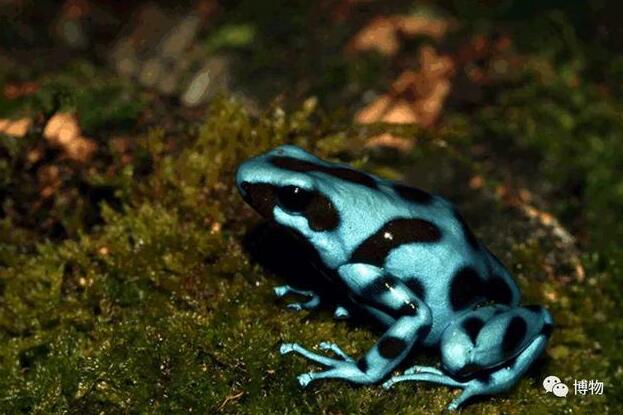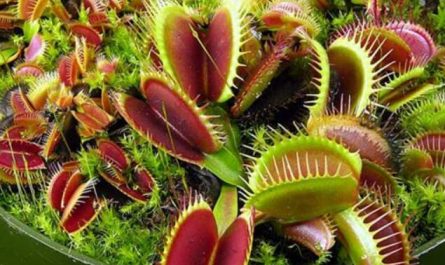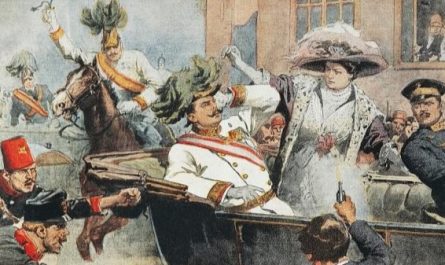Today we change the style of painting and get to know the best kind of amphibians. This includes today’s protagonist-Dendrobates auratus.
Like other poison dart frogs, dyed poison dart frogs are small in size. The background color of the body ranges from mint green to forest green, emerald, and even cobalt blue and yellow. The background color is dotted with large and small brown to black. Spots.
01
How to catch a poison dart frog?
The dyed poison dart frog lives in tropical rain forests, from Nicaragua to Costa Rica.
Interestingly, it is also distributed on Oahu in the Hawaiian Islands thousands of kilometers away, but this is purely artificial-the dyed poison dart frog was introduced in 1932 in order to control the number of mosquitoes. Later, it was also found on the island of Maui in the Hawaiian Islands.
The reason why poison dart frogs are called poison dart frogs is that the local aborigines will use their venom to make poison arrows.
But poison dart frogs are so small (the average length of males is about one or two centimeters, and the females are slightly larger, only two or three centimeters), and they always hide among the leaves. How do the indigenous people find them and collect their venom?
Come and feel its size
The Indians would use a very clever way to draw the frog out first-imitating the call of the poison dart frog. They whistled, made a “fiu-fiu-fiu” sound, and patted their cheeks with their fingers-this is a very superb ventriloquist.
Why do you say that? Because there are always frogs who will respond to them.
So they can locate the poison dart frog.
In the next step, the Indians would pick up the poison dart frog with leaves so that the venom would not get on their hands. They didn’t want to touch the venom—even the slightest rubbing would cause lasting pain, similar to a bee. The sting.
After that, the Indians packed the caught poison dart frogs in bamboo tubes and brought them back to the tribe for the next step. They would use a bamboo stick called “siuru kida” to pass through the body of the frog from the mouth, and then put it on the fire and roast it. In this way, the pain and burning will force the poison dart frog to secrete milky white venom from the back, which is very convenient for the indigenous people to collect.
The venom secreted by a frog is enough to make 50 poisonous arrows. The poison arrow is made from the veins of the plant chonta palm. It is about 20-25cm long and has a sharp tip. The tail is wrapped with cotton-like plant fibers. After being covered with venom, a perfect poison blow arrow is completed.
In the past, this poisonous arrow was often used in tribal conflicts. Now it is only used as a tool for local people in hunting games to hunt jaguars, deer, hedgehogs, monkeys and birds.
When a poisonous arrow hits an animal, the venom can quickly paralyze them, causing them to die in a short time. Then the Indians will immediately take out the poisoned arrow, with a small piece of the animal’s meat-although eating a small amount of venom is not What happens, but if the person eating it has mouth ulcers or something, it is very dangerous, so it is better to try to get the venom out of the prey.
02
Will the venom poison itself?
Although the venom of a poison dart frog is extremely toxic, researchers have found that if a poison dart frog does not eat toxic food for a lifetime, it is non-toxic.
Poison dart frogs do not synthesize toxins, such as alkaloids, by themselves. They obtain poisonous substances from food-ants, beetles, and horses are all good sources of toxins. Toxins are stored in poison glands on the skin of poison dart frogs and are released when needed.
Different alkaloids have different toxicities. Among the more than 800 kinds of poison dart frog alkaloids that have been reported, Batrachotoxin is considered the most toxic. It is a steroid compound with strong cardiac and neurotoxic activity. It can block the sodium ion channels of nerves and muscles, so that the heart and nerves can no longer function. An adult man weighing 70KG has only 0.14g of toxin Can kill him.
Then the question is, how can a poison dart frog weigh only a few grams to avoid being poisoned by the poison? Below, we use some simple junior high school biology knowledge to answer this question: Batrachotoxin will act on sodium ion channels, and the aspartate codon AAC on the sodium ion channel gene of poison dart frog mutates into ACC and becomes Su This mutation directly causes Batrachotoxin to be unable to bind to sodium ion channels.
To sum up, the venom will not cause damage to the poison dart frog itself, and there will be no “killing oneself” situation.
It’s also interesting that this deadly poison dart frog toxin is not only found on poison dart frogs. In Papua New Guinea, across the Pacific Ocean, people also found it Found this toxin.
The Guanlin Flycatcher emits an unpleasant sour smell, and the locals call it a “garbage bird” in disgust.
03
During the reproduction process of poison dart frogs, the mother frog lays eggs among the fallen leaves on the ground, and then the parents return regularly to replenish the eggs.
When the eggs hatch and become tadpoles, the frog mother and frog daddy will transport the tadpoles to the small puddles formed between the branches and leaves of the tree.
This time, the poison dart frog has to remember the route between the spawning place and the tadpole (this also includes the place to forage and the place to fetch the eggs). If they were born with road idiots, they might have been extinct long ago. . . . . .
At present, people have learned more and more about the “navigation” capabilities of different poison dart frogs: Oophaga pumilio will remember the marks along the way to accurately find the location of their cubs.
Allobates femoralis can accurately remember the route home and navigate along the route.
We know that there are many birds and mammals that generate cognitive maps in the brain, but it is unclear whether other vertebrates have this ability. That poison dart frog is so capable of recognizing roads, can they also generate cognitive maps in their minds based on the environment after they memorize the road signs?
The latest research is done by dyeing poison dart frogs.
In 2019, through a series of Morris water maze experiments, some researchers found that the performance of colored poison dart frogs in the maze is similar to that of white mice. In the water maze experiment of mice, the mice can escape from any corner of the pool. “On a hidden platform, even if the platform is not visible, it can quickly learn how to find the platform. At present, this ability has been widely confirmed in mammals and birds, and the dyed poison dart frog has a similar ability. This shows that the dyed poison dart frog is a living map and the first conclusive evidence that amphibians have the ability to recognize maps.






